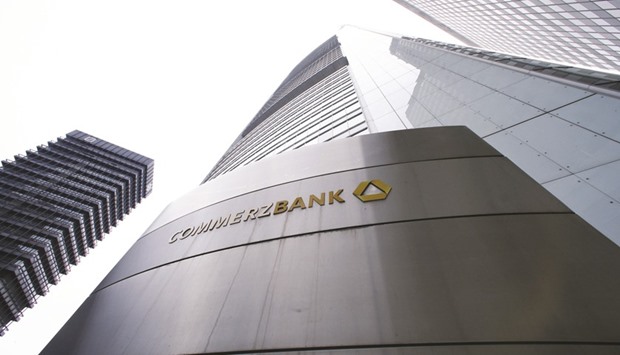A little help from Mario Draghi could push forward a recovery in the stocks that have suffered the most as he drove down interest rates and bought up every bond in sight: banks.
They appear to be expecting it, if share prices are any indication. Lenders in the Euro Stoxx 50 Index are rising four times as fast as the rest of the market in October, closing on Wednesday at a four-month high.
Bulls are betting European Central Bank President Draghi is getting ready to loosen limits on debt purchases, paving the way for yields to move in a way that could make bank lending more profitable.
Not that it need happen right away. While the ECB on Thursday left stimulus unchanged, investors are looking for any hint that quantitative easing will look a little different by December - mirroring the Bank of Japan’s announcement last month. That would be welcome relief for an industry that dropped as much as 47% since the ECB began buying bonds in March 2015, a move that led to a slump in yields and concerns about banks’ profitability.
“You can really tell that markets have already priced in some kind of adjustment from the ECB,” said Simon Wiersma, an investment manager at ING Bank NV in Amsterdam. His firm oversees about €26bn ($29bn).
“The ECB knows that its policies have put a lot of pressure on banks. It’s soon time for Draghi to tell investors what he’s trying to do with the yield curve.”
When the BoJ said in September it would tweak its asset- buying program to better manage the difference between short and long-term bond yields, lenders around the world rallied. The Euro Stoxx Banks Index surged 2.7%, the most in a month.
Financial firms have suffered since the ECB started quantitative easing as its asset purchases suppressed bond rates across virtually all maturities. The yield on two-year German debt is negative, while that on 10-year bonds is at 0.03%.
Banks benefit from a steep yield curve because they can borrow cheap, short-term cash and lend it out at higher, long-term rates. ING’s Wiersma says that the ECB would help bank profitability if it makes debt that yields less than its deposit rate, or minus 0.4%, eligible for purchases.
That would lead to more buying of securities with shorter maturities, easing the pressure off the longer-term part of the bond market.
Around 73% of economists surveyed by Bloomberg said the central bank will change its QE rules, and of those, about three-quarters predicted a shift in issuer or issue limits by the end of the year. A majority of them see the ECB extending its QE beyond March. The Euro Stoxx Banks gauge climbed 0.9% in London, while the broader benchmark added 0.3%.
The ECB is aware of the impact of its stimulus - just this week it said that negative rates have harmed loan margins and net interest income at lenders. Commerzbank, which has halved in market value since the ECB started QE, said last month it expects gross revenue to decline by €300mn by 2020, if rates remain unchanged.
Banco Santander, down 35%, also said low borrowing costs are damaging profitability.
“Given the low interest-rate environment, it’s very difficult for banks to make any profits,” said Guillermo Hernandez Sampere, head of trading at MPPM EK in Eppstein, Germany. His firm oversees $260mn. “A company can only survive if it accepts that environment and moves on. It has to.”
Euro-area lenders have been hit especially hard in the past year, losing about a quarter of their market value. They trade at 0.6 times the value of their assets, compared with a multiple of almost 1 for peers in the S&P 500 Index.
The gap prompted strategists at Citigroup to recommend buying their shares in early October, and Bank of America Corp followed suit this week. The region’s banking gauge has jumped 7.5% this month, and analysts have tempered their estimates for profit declines in 2016.
“The first mission for the ECB now is to get a clear message about what it intends to do in the next few quarters,” said Francois Savary, who helps oversee the equivalent of about $2.8bn as chief investment officer of Prime Partners in Geneva. “I expect some clarification about the way they are going to conduct monetary policy.”

Commerzbank headquarters is seen in Frankfurt. The German lender, which has halved in market value since the ECB started QE, said last month it expects gross revenue to decline by u20ac300mn by 2020, if rates remain unchanged.


